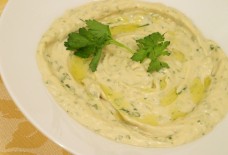A look into the Proud Past: Omar Al Mukhtar: Teacher, Resistance Leader, "Lion of the Desert"
By Ruqyah Sweidan, Arab America Contributing Writer
It is often difficult for both Arabs and Americans to realize the gravity of Arab heroism when its history is shrouded by current conflicts. Libya, for example, is embroiled in a civil war. Different tribal and political affiliations are deeply rooted within the problem. This is in addition to the continuing money and arms being supplied by opposing foreign powers. Unfortunately, this complex issue is also overshadowing a significant anniversary. This year, 2021, marks the ninetieth anniversary of the execution of the great freedom fighter Omar Al-Mukhtar. He was known for his fierce resistance of the fascist Italian occupation of Libya.
Early Life of Al Mukhtar
Al Mukhtar was born in 1862 in the village of Zawiyat Janzur on Libya’s eastern coast. Losing his father at a young age, Al Mukhtar was raised by Sheikh Hussein Ghariani, a religious scholar and friend of his family. Under Ghariani’s tutelage, Mukhtar memorized the entire Quran. He then traveled to eastern Libya’s Al-Jaghbub Oasis, the headquarters for the Senussian Dawa. This group was an Islamic reformist movement founded by Sheikh Mohammed ibn Ali Senussi. Mukhtar stayed there for eight years, learning theology and Islamic science from Muslim scholars of the Senussian movement. In 1897, al-Mahdi appointed Mukhtar as the governor of Libya’s eastern town of Zawiyat al-Qusour. Mukhtar quickly became known for his wisdom, fairness and ability to resolve disputes.
Omar Al-Mukhtar would later move to Sudan, where there was also a prominent presence of the Senussi. It is reported that he gained his title, “Lion of the Desert” during this trip. It is said that he defended his travel companions against a lion that threatened them. Mukhtar rode his horse toward the animal and shot it, returning with its head.
Muhammad al-Mahdi al-Senussi was second in command in the Senussi movement. When he passed away in 1902, Mukhtar returned to Cyrenaica and was appointed again as the sheikh of the town of Zawiyat al-Qusour. The ruling Ottomans there welcomed his administration.
Military Beginnings
In 1911, Italy declared war on the Ottoman Empire that was ruling Libya. At this time, Mukhtar was fifty-three years old but was a strong leader of the Libyan resistance against the Italians for twenty years. Despite what the Italians believed to be an easy mission in conquering the Bedouins, Mukhtar inflicted huge losses to the Italians. He commended the Libyan rebels in several battles, including the two-day battle of Derna in May 1913. This battle infamously ended with the deaths of seventy and the wounding of four hundred Italian soldiers.
Resistance Struggles
Libyan success would not last long, unfortunately, as the fascists seized control of Italy in October 1922. This brutal government quickly escalated military operations in Libya. Rome intended to block supply routes from Egypt which assisted the Libyans. So, they occupied the oasis of Jaghboub, and Mussolini appointed General Badoglio as the military governor of Libya in January 1929.
Badoglio wanted to negotiate with Mukhtar. Mukhtar agreed to a truce in exchange for the return of Prince Muhammad Idris Al-Senussi, the withdrawal of Italians from Jaghboub, and release of political detainees. When none of the terms were met, Mukhtar realized the deception was meant to gain the Italians time to reinforce their resources. He then returned to his resistance fighters to prepare them.
Mussolini took the opportunity to send in the stronger General Graziani to lead a more serious campaign against the Libyans. In 1931, Graziani, with Badoglio, De Bono (minister of the colonies), and Mussolini, initiated their most ruthless plan. They transferred one hundred thousand of the Gebel population to concentration camps on the Giarabub coast. This closed the border with Egypt, cutting the solidarity and supplies from the Libyans’ ally. The rebels were deprived of any further help, spied upon, and hit by Italian aircraft.
The Bitter End
Despite these perilous hardships, Mukhtar showed amazing valor and continued the fight. On September 11, 1931, Italians finally captured Mukhtar after an ambush in which his horse was killed, and his glasses were broken. Three days later, Graziani hastened Mukhtar’s trial to the Special Court. Mukhtar was sentenced to death by hanging on September 14th, 1931, at the age of seventy-three.
Remembering
Eventually, the occupation of Libya ended with the surrender of the Fascist League by the end of World War II. For many years, Omar Al Mukhtar maintained defiance to a rich and powerful country. He should be always hailed as a magnificent figure from our recent history. Yet, he is not as talked about and celebrated as other heroes of that time. This is especially interesting as World War II is constantly remembered from the European/American perspective but not the Arab one.
Nevertheless, there was an epic war film made about Mukhtar. Lion of the Desert (1981) is a positive, accurate portrayal of Arab resistance and Islamic jihad. It is a must watch!
Check out the Arab America Blog here!



